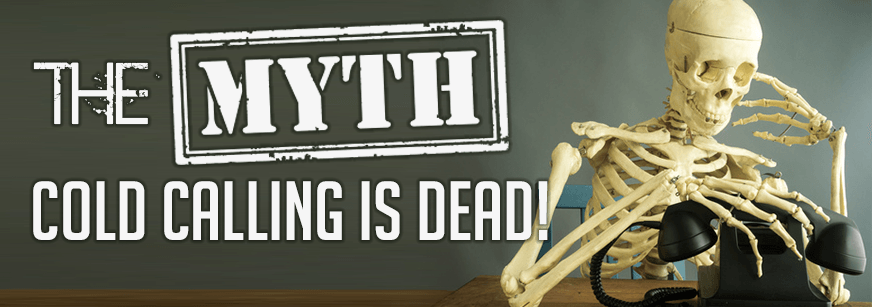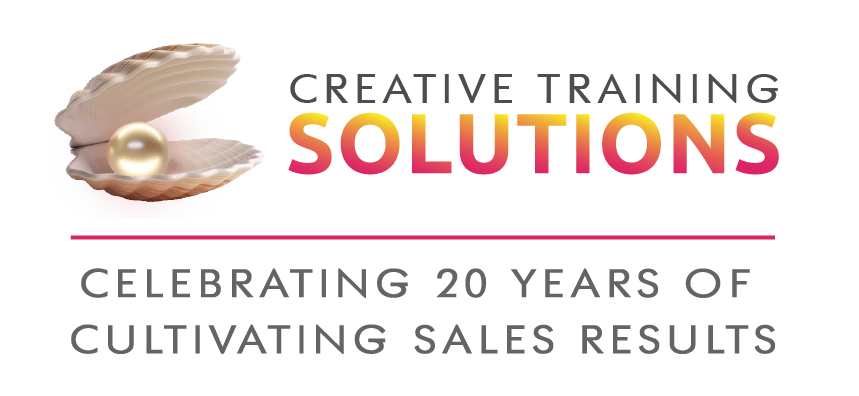The Myth: Cold Calling Is Dead!

Recently, there has been quite a bit of chatter on social media and in articles declaring, “Cold calling is dead!” But is it? I think it is more like 99% of salespeople don’t like to do it instead of it being dead. Cold calling could never be dead! Maybe it depends on your definition of a “cold call.”
A colleague I respect from the sales training industry recently said something that I agree with 100%. He stated: “These declarations of death usually come from people who FEAR cold calling, STINK (a different word was used — use your imagination) at cold calling, or both.”
Most of us think of a cold call as walking up to the door of a company we have never done business with, approaching the receptionist, and asking the infamous question: “Can you tell me the name of the person in charge of…?”
Yes. That is one form of cold calling, but that is not what the majority of us do. A more realistic definition of a cold call is: A call (either on the phone or face-to-face) to someone you have never spoken with before, with a specific objective. For most of us, the objective of the call is to set an appointment to talk further.
So a cold call can be a variety of things. It can be a call to: a name on a list, a referral, a new contact within an existing customer, a dormant account, or a prospect in a new territory that you are taking over. It can also be a walk-in to an organization.
There is an art to successful cold calling, but there is also a process to it. So here are five tips to refine your cold calling process:
1. Have your list ready.
The day before, make sure you have the company names, contact names and phone numbers of those you want to call. Mix it up a bit by making calls to those who have never done business with your company, accounts that are now dormant, and referrals. This way, you can go down your list without procrastinating and you’ll have some variety.
2. Schedule time in your calendar each and every day to do these types of calls.
I know you have heard this before! But, I’m not asking you to block out several hours at a time — just for you to schedule fifteen minutes in the morning and fifteen minutes in the afternoon. You should be able to knock out anywhere between ten and fifteen calls in that amount of time.
3. Be specific with your objective for the call and stick to it!
This is where scripting can help you. For a cold call, remember, you are doing interruptive marketing. The person you are calling is not waiting for your call. Instead of trying to get into a long dialog, respect their time and ask for an appointment in the future (on the phone or face-to-face) so they can be prepared. Remember: “How is Tuesday at 2:00?”
4. Don’t get discouraged when you get a “No.”
At the same time, don’t stop making calls when you get a “Yes.” Remember, we are in the business of getting “No’s.” We have to get the “No” in order to find our “Yes.” It is the law of ratios. Make sure you get your “No” ratio. When you get your “Yes,” don’t stop! You are on a high and sound more positive on the phone, so make a couple more dials and capitalize on that happy mood!
5. Be prepared for the negative responses you will hear.
You know the most common negative responses you get when you call. Make a list of those you hear and learn how to turn them around to your benefit. Realize the first response is a “knee-jerk” reaction and not the real reason they will not meet or talk with you. You need to keep going to the second or third negative response to find out the real reason they are saying “No.”
In sales, we cannot stay in business without growing the business and cold calling can be a critical part of accomplishing that goal. These tips presented here may help you overcome your FEAR, or at least dial the STINK way down! Use your art as a salesperson, but also put a process to it in order to gain great results. Let’s just pick up the phones!
ETIQUETTE CORNER:
Putting Your Best “Hello” Forward
While we’re on the subject of cold calling, let’s talk about making a good impression by using good phone manners:
1. When making a cold call, do not use speakerphone.
This is considered rude. People feel they are on stage, even if there is no one else in the room. (On a regular call, if you want others in the room with you to join the conversation, start by using the handheld and then let the person know you will be placing them on speakerphone.)
2. Always state your name and your company name clearly.
This applies even when this is not your first conversation. There is nothing more frustrating than someone calling me and saying: “Hi, Stacia. It’s John.” Remember, you are doing interruptive marketing. In many cases, you won’t have the person’s full attention. Tell them who you are and where you are from, so they can listen to what you are saying versus struggling to figure out who you are.
3. Your voice is your image.
When using the phone, 90% of the conversation is your tone and only 10% is the words you say. Voice tone is critical to your success. Sit up or stand up at your desk when you make calls. This brings your diaphragm up and you sound better. Smile and dial. Yes, people can hear your smile. Put a mirror at your desk and look at yourself while you are on the phone.
4. Guard against talking too slowly or too quickly.
Try to match the speed of the person you are talking to, otherwise your words might be misinterpreted.
5. Allow the person you are speaking with to hang up before you do.
We have all been in the position where we think the conversation is over and we hang up the phone, accidentally cutting off the person mid-sentence. If you make it a habit of hanging up last, the likelihood of that happening goes down.
So put your best “Hello” forward by always using good phone etiquette. Your efforts will pay off!

Ready to harvest strong sales results?
USEFUL LINKS
STAY INFORMED
You need a helping hand with your project?
We will get back to you as soon as possible
Please try again later
Creative Training Solutions | All Rights Reserved |
Created by Olive + Ash.
Managed by Olive Street Design.


